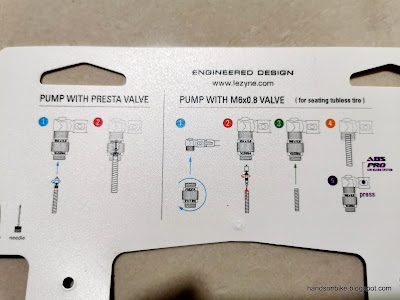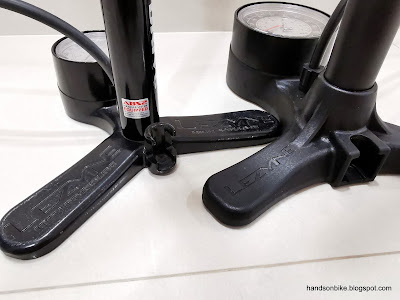What I needed is a proper road wheelset, with 12 mm E-thru axles and disc brake hubs. This was what I had, the Reynolds Assault wheelset. However, I had already sold it, which I regretted a lot. At that time, I did not plan to use it on any other bike, since I already had the new Zenith Elite wheelset from Ascent Bikes. Therefore, I decided to sell the Reynolds wheelset to free up some space at home.
If I did not sell that Reynolds wheelset, it would have been perfect for this Focus Paralane, as a used carbon wheelset for all-weather duties.
Therefore, I had to get a new pair of disc brake compatible, 12 mm E-thru wheels. I did not want to fork out over $1000 for a pair of carbon wheels, for all-weather riding. Therefore, I went for the more budget option, which is a pair of aluminium wheelset.
This Shimano RS770 wheelset is a peculiar wheelset, as the rim is made of a hybrid of carbon and aluminium. More details below.
Looks totally like a low profile lightweight carbon wheelset. I like the stealthy look of it.
It has a wavy rim shape, similar to Princeton CarbonWorks wheelset. Probably a coincidence...
The rim is actually made of aluminium, but reinforced with a layer of carbon on top. Probably only Shimano is mass producing this type of rims.
Why does Shimano use carbon reinforced aluminium rims? This actually dates back to some years ago, when carbon wheelsets for rim brakes were getting popular. At that time, road bikes were predominantly on rim brakes, therefore the braking surface is still on the rim.
Some other manufacturers have a full carbon rim, which means that the braking surface is made of carbon. This tends to have poorer brake performance and heat dissipation properties compared to conventional aluminium rims.
Shimano wanted to make carbon rims, but still retain the superior braking performance of aluminium rims. Therefore, this hybrid construction was created, so that the braking surface is still aluminium, but the rim profile can be made thinner in aluminium, and cladded with carbon fibre for strength and also appearance. Check out the Dura-Ace WH-7900 C24 wheelset to see what I mean.
Somehow, this construction has endured even to this day, on the mid-range disc brake wheelset, as shown here by WH-RS770. It is Ultegra grade, but not labelled under the Ultegra series. There is no advantage to having the aluminium braking surface on the rim, since disc brakes are used.
Black spokes and spoke nipples are used, to match the black rims.
Although the braking surface seems to be present on the rim, it is not to be used.
The wheel comes with tubeless rim tape already installed.
However, the end of the rim tape was not pressed down properly, and tends to detach. If an inner tube is used, it is not a problem. However, if a tubeless setup is used, sealant will get underneath the tape and may leak.
External rim width is 22 mm, which is old school. Nowadays external rim widths are easily 28 mm or more.
Internal rim width is old school as well, at just 17 mm. Most new road bike wheels now have a wider internal rim width of at least 19 mm, or 21 mm.
Rim height at the shallowest areas are 28 mm.
If measured at the taller areas, the rim height is 30 mm.
The hubs look nice with a shiny anodised silver finish, with black areas as well. Still using traditional cup and cone bearings, but for 12 mm E-thru axles.
Centerlock disc brake mounting, which makes installing or removing rotors so much easier compared to using 6 bolt type.
WH-RS770 is the model number of this wheelset. Bladed straight pull spokes are used.
Rear wheel has a steel freehub body, to prevent gouging caused by the steel sprockets. Adds some weight over an aluminium freehub body, but lasts much longer.
Weight of front wheel is 743 grams, heavier than the Zenith Elite but lighter than the Reynolds Assault.
Rear wheel is pretty heavy at 923 grams, due to the steel freehub body and cup-and-cone bearings.
This gives a total wheelset weight of 1666 grams, which is slightly more than the Reynolds Assault (1637 grams) and heavier than the Zenith Elite (1504 grams). Not too bad for an aluminium wheelset!
Using the same Continental GP5000 tires on this wheelset as well, for maximum speed.
GP5000 tires on the RS770 wheelset. However, a silver band can be seen at the interface between the rim and the tire.
This silver band is from the exposed aluminium at the top edge of the rim, which is not covered by the carbon fibre layer.
This silver line does not look good, as it spoils the integrated look of the wheelset and tire. Does not affect function, but it lowers the aesthetic value of this wheelset. Will do something about it later.
Actual tire width is about 27 mm, when mounted on this wheel with 17 mm internal rim width. In comparison, actual tire width is 28.5 mm when mounted on internal rim width of 21 mm.
Added the Dura-Ace RT900 rotors as well. Now it looks fast!
Comparing the RS770 wheelset with the Zenith Elite wheelset, both with 28 mm GP5000 tires. Rim height is obviously different. The silver line on the RS770 wheelset stands out too much, unfortunately.
For pure academic purposes, I installed the previous Continenal Grand Prix 4 Season tires on this new rim as well.
Using Continental Grand Prix 4 Season 28 mm tires on different internal rim widths:
20 mm rim --> 31.8 mm actual tire width
18 mm rim --> 30.8 mm actual tire width
17 mm rim --> 30.8 mm actual tire width
As you can see, the previous generation of Continental tires are generally oversized, even when mounted on narrow rims. The new generation (GP5000) is more true to size.
Later on, after the wheelset is installed on the full bike, I will be able to evaluate the ride quality of this RS770 wheelset with GP5000 tires.























































